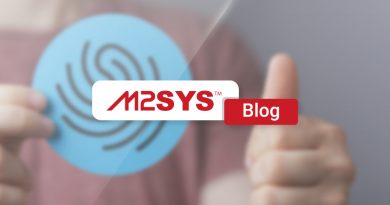Enhancing Border Security Through AI-Powered Immigration Data Digitization
Over 1.2 billion people cross borders annually, straining control systems. AI-powered immigration data digitization enhances security by automating processes, reducing errors, and improving threat detection. This approach speeds up low-risk entries, cuts costs, and ensures compliance with privacy laws, preparing borders for future challenges.
Did you know that over 1.2 billion people cross international borders each year, putting immense pressure on border control systems? This massive flow of travelers demands smarter ways to handle security without causing long delays. Immigration data digitization for border control steps in here, using AI to make processes faster and safer.
What Is Immigration Data Digitization for Border Control?
Immigration data digitization turns paper records and manual checks into digital formats that computers can process quickly. For border control, this means scanning passports, visas, and other documents electronically at entry points. AI adds intelligence by analyzing this data in real time. For example, it spots unusual travel patterns that might signal a threat. Governments face tough challenges like outdated systems that slow down operations and raise costs. However, digitization helps by automating routine tasks, so officers focus on high-risk cases.
How AI Improves Real-Time Threat Detection
AI takes immigration data digitization to a new level with predictive analytics. It reviews traveler histories and flags risks before they become problems. Imagine a system that checks a person’s travel route against known patterns of illegal activity. This approach cuts down on human error, which often leads to overlooked threats. In fact, studies show that AI can reduce false positives in security checks by up to 40 percent. But agencies struggle with integration issues when old systems don’t connect well with new tech. Therefore, finding solutions that bridge these gaps becomes key for smooth operations. For example, AI-Powered Role-Based Watchlist Management offers a secure way to manage watchlists and enhance threat detection.
Benefits of Automated Risk Assessments in Border Management
Automated risk assessments use digitized data to score travelers based on factors like origin country or past behavior. This speeds up low-risk entries while holding back potential issues for closer review. As a result, lines move faster at airports and land borders. Yet, high operational costs from manual processes drain budgets. Digitization tackles this by minimizing the need for extra staff during peak times. Moreover, it ensures compliance with privacy laws by securely handling personal information, which prevents legal headaches.
Addressing Integration Challenges in Border Systems
Border management often involves multiple agencies, like immigration, customs, and law enforcement. Interoperability problems arise when their systems can’t share data easily. Immigration data digitization for border control solves this by creating unified platforms. For instance, real-time data sharing lets customs access immigration records instantly. Deployment delays happen when new tech takes months to set up, but scalable digital tools roll out faster. Consequently, governments save time and money while boosting security. Platforms like M2SYS Border Control Solution exemplify how integration can be achieved effectively.
Adapting to Global Migration Trends with Digital Solutions
Migration patterns change rapidly due to events like conflicts or economic shifts. AI-powered digitization adapts by learning from new data and updating threat models. This keeps border control ahead of emerging risks. However, compliance issues with international regulations can complicate things. Digital systems help by building in rules that automatically enforce standards. So, agencies stay on the right side of the law without constant manual oversight.
Real-World Examples of Successful Implementations
Several countries have seen gains from AI in immigration data digitization. In Europe, one nation cut processing times by 30 percent after digitizing border checks, allowing better focus on security. Similarly, in Asia, AI helped detect smuggling rings through pattern analysis in traveler data. These cases show how digitization minimizes errors and fosters inter-agency teamwork. Still, pain points like high costs and delays persist in many projects, highlighting the need for reliable platforms.
How Platforms Like M2SYS eGov Support Border Control
With over 20 years of experience working with governments globally and in the United States, M2SYS eGov serves as a platform that builds and delivers customized, secure, and interoperable border control solutions. It addresses pain points such as integration challenges by connecting existing systems seamlessly. For example, its AI-driven tools enable real-time anomaly detection, which helps in predictive analytics without hefty setup delays. Agencies use it to create workflows that comply with regulations, reducing operational costs through automation. Additionally, it supports data sharing across air, land, and sea entry points, making it easier to handle diverse migration trends. Governments appreciate how it streamlines deployments, often cutting rollout times significantly. AI-Powered Custom Workflows elevate border efficiency with tailor-made solutions.
Why Digitization Matters for Future Border Security
As threats evolve, immigration data digitization for border control remains essential. It balances speed with safety, ensuring travelers move efficiently while risks are caught early. By tackling issues like interoperability and compliance, these solutions prepare borders for tomorrow’s challenges. If you’re involved in border management, exploring such platforms can reveal practical ways to improve your operations.
What is the significance of immigration data digitization for border control?
Immigration data digitization is crucial as it transforms manual paper processes into digital formats. This upgrade speeds up document processing and enhances security by enabling real-time threat detection using AI. To learn more about integration benefits, visit our detailed guide on M2SYS Border Control Solution.
How does AI contribute to real-time threat detection at borders?
AI systems utilize predictive analytics to review traveler histories and identify potential risks even before they occur. By reducing human error and false positives, AI significantly enhances security checks. Discover more about these advancements in AI-Powered Role-Based Watchlist Management.
What challenges exist with integrating new digitization technologies?
Integration challenges often include compatibility issues between old and new systems, which can result in inefficiencies. Solutions like the M2SYS Border Control Solution offer scalable tools designed to bridge these gaps efficiently.
How do automated risk assessments benefit border management?
Automated risk assessments streamline the entry process by scoring travelers based on risk factors, expediting low-risk entries and focusing attention on higher-risk cases. The efficiency of these processes can be explored further in our article on securing airports with modern solutions.
Why is maintaining data privacy important in digital border management systems?
Ensuring data privacy is vital to comply with international regulations and protect personal information. Digital systems handle data securely to prevent unauthorized access and legal issues.










